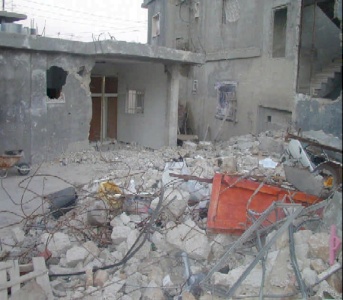Refugee Voices

“Stitching a Homeland”
“Though she has never seen Hebron, young Ola Abass can imagine
what its moon must look like. Huddling around a space heater with
her sister, mother, and 18 other women at Rashidieh refugee camp,
[9 year old] Ola is spending this cold winter morning embroidering
the blue Hebron moon onto squares.”
"In spite of the bad situation we're living in, we create
embroidery and send it all over the world,” says [Aidia Gadban, one
of the women in the embroidery group]. "We just want the right to
life, the right to return, and like embroidery we have to hold onto
that from one generation to the next."
“For Palestinian refugees in Lebanon embroidering has long been
a way of, quite literally, holding onto hope. During the 1982
Israeli invasion Palestinians fleeing for their lives brought their
thread with them, embroidering for al-Badia in the bomb shelters.
That same year, when refugees from Ain al-Hilweh were left sleeping
beside the sea near Sidon, an Italian women named Adel Manzini
chose to help by distributing thread and cloth pieces rather than
food. Soon 300 women were embroidering beside the sea.”
“Palestinian embroiderers still read pieces of cloth like maps
holding secrets to lost villages - with different colored roses,
stars and cyprus trees revealing the landscapes of Ramallah,
Bethlehem and Jerusalem. Though these women [have] never [seen]
Palestine, to embroider is to understand that in the world of
cloth, and perhaps in reality, Ramallah and Hebron have different
cyprus trees, Bethlehem and Jerusalem have different roses. Even
the "gates of heaven," a traditional Palestinian stitch, rise
differently depending on your origins.”
“[According to Hamida] Othman [a group coordinator], for the women
embroidering, no difference exists between embroidering, and
holding on to the right of return. "Often, when we speak of
Palestinian issues, the first thing we speak about is traditional
embroidery. We talk about traditional dresses, and how our families
used to wear them in Palestine, and what that meant. It makes us
remember that each traditional stitch first belonged to us in
Palestine." "Here, they feel like they are also somehow helping the
intifada. For us, creating traditional embroidery is our way of
continuing to struggle."
Established in 1977 with women left widowed by the Tel al-Zaatar
massacre, [al-Badia, a Najdeh Association program] today has two
main workshops in Rashadieh and Ain al-Hilweh camps, with smaller
groups active in Bourj al-Shamali, Mieh Mieh, Shatila, Beddawi, and
Nahr al-Bared. Their embroidered goods are sold primarily in the
al-Badia shops in Beirut, with some of the products being exported
to Europe. camhub
Excerpts from, Stephanie Saldana, “Stitching a Homeland:
Palestinians find refuge embroidering for al-Badia,” The Daily Star
(Beirut), 14 December 2001. For more on al-Badia and Association
Najdeh, see,
http://almashriq.hiof.no/lebanon/300/360/362/najdeh/
